2025-12-20 01:53:19
Twas the week before Christmas... and I'm emptying my notebook below before I'm back on the road for a couple weeks. Writing here and there, as always. Including looking back at last year's predictions – trying to give Apple a few more days to pull off #1! For now, there's a lot below. Happy Holidays. 🍻



📹 TikTok Signs Away US Entity – Technically, the deal still isn't done. It's set to close on January 22, 2026 and presumably China (or the Trump administration) could still kill it in some way. But presumably TikTok wouldn't have signed without China's blessing – or assurances China would give the final sign-off? I mean, who knows, this whole situation has been such a farce. Including the "around $14B" valuation – I often joke about big deals being less than AI seed rounds these days, but this one truly is! It's also a little odd that an Abu Dhabi-based fund is one of the key backers to ensure American control of the entity? It's also still not clear which "new investors" own the mysterious other 5% – is it the Murdochs? The US Government? Oracle is clearly the lead here, so it will be interesting if that in some way gets roped into the Netflix/Warner Bros/Paramount love triangle – does the ownership of the father mean anything for the ownership of the son? What if the father is backstopping said ownership? With shares in said buyer of TikTok? It's yet another wrinkle that could be in Netflix's favor here... But the main question remains: is TikTok really still going to remain the hot consumer product when owned by a nearly 50 year old tech company (one in turbulent waters given their AI reinvention efforts, no less) and private equity funds? Where's 'TikTok 2'? [Axios]
🚙 Waymo Worth Way More Than $100B – I mean, at least in my own estimation, just based on our current market environment (Tesla, Uber, etc) and not to mention that AI startups are closing in on such valuations with little to show for it – certainly not traction and/or revenue like Waymo has! Then again, Alphabet is getting others to validate the valuation, which is undoubtedly part of the very reason for the raise (as Google could clearly just fund this themselves). And they sort of have the burden of showing actual revenue – $350M ARR – versus even Tesla, which still has a very much in beta self-driving taxi program. Still, there's a whole future-of-transportation/magical experience narrative that they could spin here (and would, were Elon Musk running the company, you imagine – though he would also say, as he often does, that Waymo's approach isn't scalable in the way Tesla's will be) where $100B is an absolute steal. For now, maybe they're just fine to fly relatively low-key under the lidar. [Bloomberg 🔒]
💰 OpenAI Worth Way More Than $800B – By which I mean they're apparently targeting an $830B valuation in a new would-be fundraise. That's a curiously precise number for a famously imprecise business, unless you consider that they really perhaps just want that number to be higher than $800B – the number at which SpaceX is now valued, of course. And when earlier reports suggested the valuation could be a mere $750B – the old pre versus post switcheroo? – that simply couldn't stand. So who is investing? I mean, who is left? Amazon, for one, it seems. Undoubtedly more sovereign wealth funds for another. Would Apple revisit? Would Google dare?! Nothing can be ruled out. Good on Disney for squeezing into the old $500B valuation – with warrants for more, no less. 🎶When you wish upon a paper gain...🎶 Speaking of, all of the SoftBank money from the last fundraise isn't even in the bank yet. This is true perpetual fundraising. And clearly necessary! But it will also undoubtedly push up the targeted IPO valuation (as I predicted a whole month ago). Maybe OpenAI could buy Waymo with this fresh $100B?[WSJ 🔒]
⚽️ FIFA's New Netflix Game – There's been a bunch of Netflix gaming news in the past several weeks that's now completely buried under the weight of Warner Bros. But the initiative will clearly be key if Netflix wants to become the "everything app" for entertainment – and the first $1T media company – which is why they keep trying to pivot their way into the right model/experience in gaming. FIFA is an interesting play here because it was a beloved franchise (though not exactly the best brand!) that vanished over a licensing dispute with EA (which obviously kept going with new 'EA Sports FC' branding). The timing of the return, of course, is good with the World Cup next year. But can an unproven developer (that Netflix is partnering with) really nail this on the first shot? (They're also co-developing the first new James Bond game in forever due in March.) If nothing else, the price is right (free, for Netflix members). [BBC]
💰 Yann LeCun is Raising Money – Two key tidbits: 1) the company is called Advanced Machine Intelligence Labs (AMI Labs) – doesn't get more generic than that – 2) they're targeting raising €500M at a €3B valuation. That almost seems quaint and shows some restraint in this day and age! Still, it presumably will make LeCun a billionaire, or close to it, on paper. Sort of interesting/fun to think about in the context of what Zuck has been dishing out to AI talent and what he clearly wasn't dishing out to LeCun. This report reiterates (as LeCun has stated) that Meta won't be invested in the lab but there is still some sort of "partnership", which continues to sound like PR for both sides post-breakup. Also, LeCun has brought on a CEO named LeBrun, that's just LeFun. [FT 🔒]
🎬 Warner Bros Discovery Rejects Paramount's Takeover Bid – No surprise, but the two most interesting tidbits are how WBD felt misled by Paramount as their bids kept morphing to make them more attractive, and how they don't believe Paramount is actually good for the money – even though it's being backstopped by Larry Ellison. They don't trust the revocable trust (where Ellison's Oracle shares reside) element. It can't help that those shares are in a free-fall as investor concerns mount over Oracle's AI spend and the debt required... Paramount hasn't raised the offer thus far and instead seems intent on taking it to the shareholders for a vote. And while some of those investors are open to Paramount's offer, it feels like there are an increasing number of things starting to work against it – beyond the Oracle concerns, the YouTube/Oscars deal may oddly help Netflix's regulatory case, the fact that hedge funds are now circling the WBD TV networks (so there's clearly outside interest in those), Jared Kushner oddly dropping out of the consortium may not matter monetarily but seems like it will optically for you-know-who, etc. It's worth listening to RedBird Capital's Gerry Cardinale for the counter-arguments on Matt Belloni's podcast The Town. He truly believes it will come down to how those TV networks are valued, and that the WBD/Netflix would be implicitly wildly overvaluing them (versus their offer). It is interesting that no one is talking about the potential Netflix stock upside in this deal...Feels like they should? All eyes turn to January 8, the deadline for investor tenders... [NYT]
"The bull case is that they’ll scale into it, and that a lot of companies have low margins to start, but this is a company at scale. There is no scaling going on here."
– Gil Luria, an analyst with D.A. Davidson, giving his thoughts on CoreWeave – a company which he says has the "ugliest balance sheet in technology, by far."
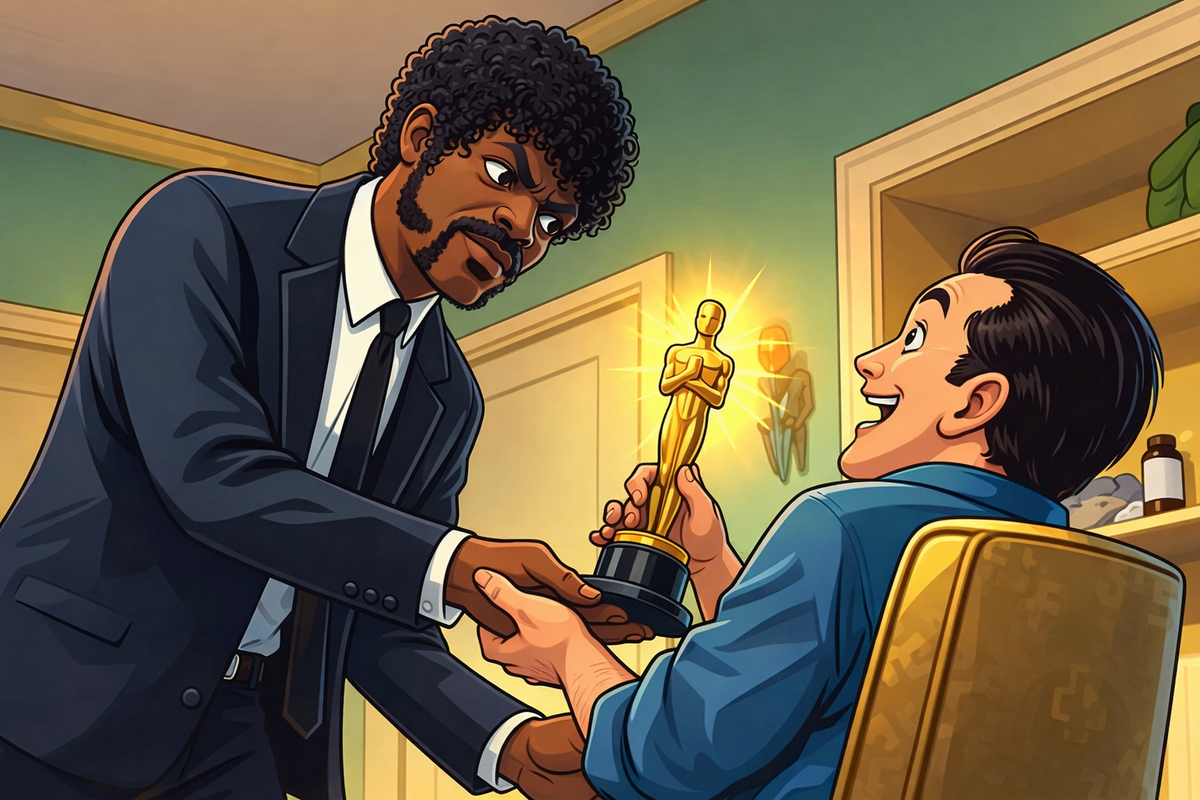

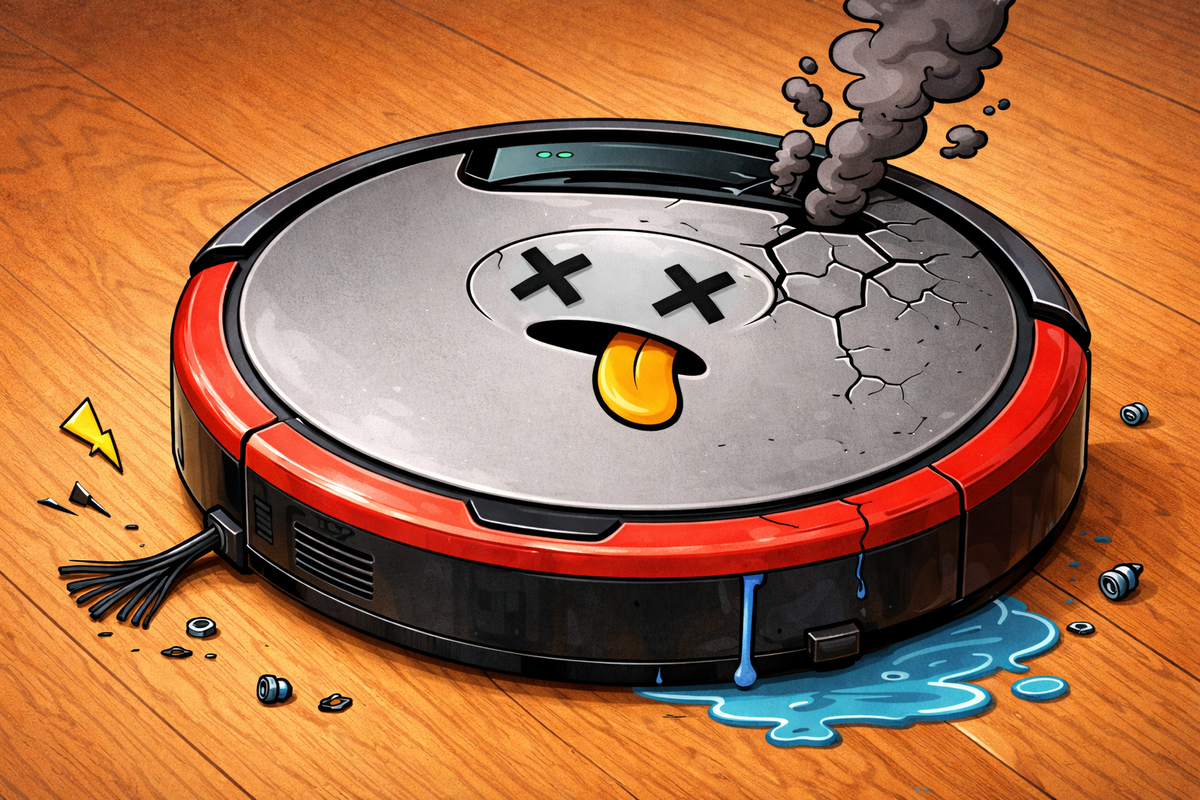
Yeah, it's getting harder to see, quite literally, how Paramount Skydance is getting this deal. Certainly neither Netflix or Warner Bros Discovery think that right now!
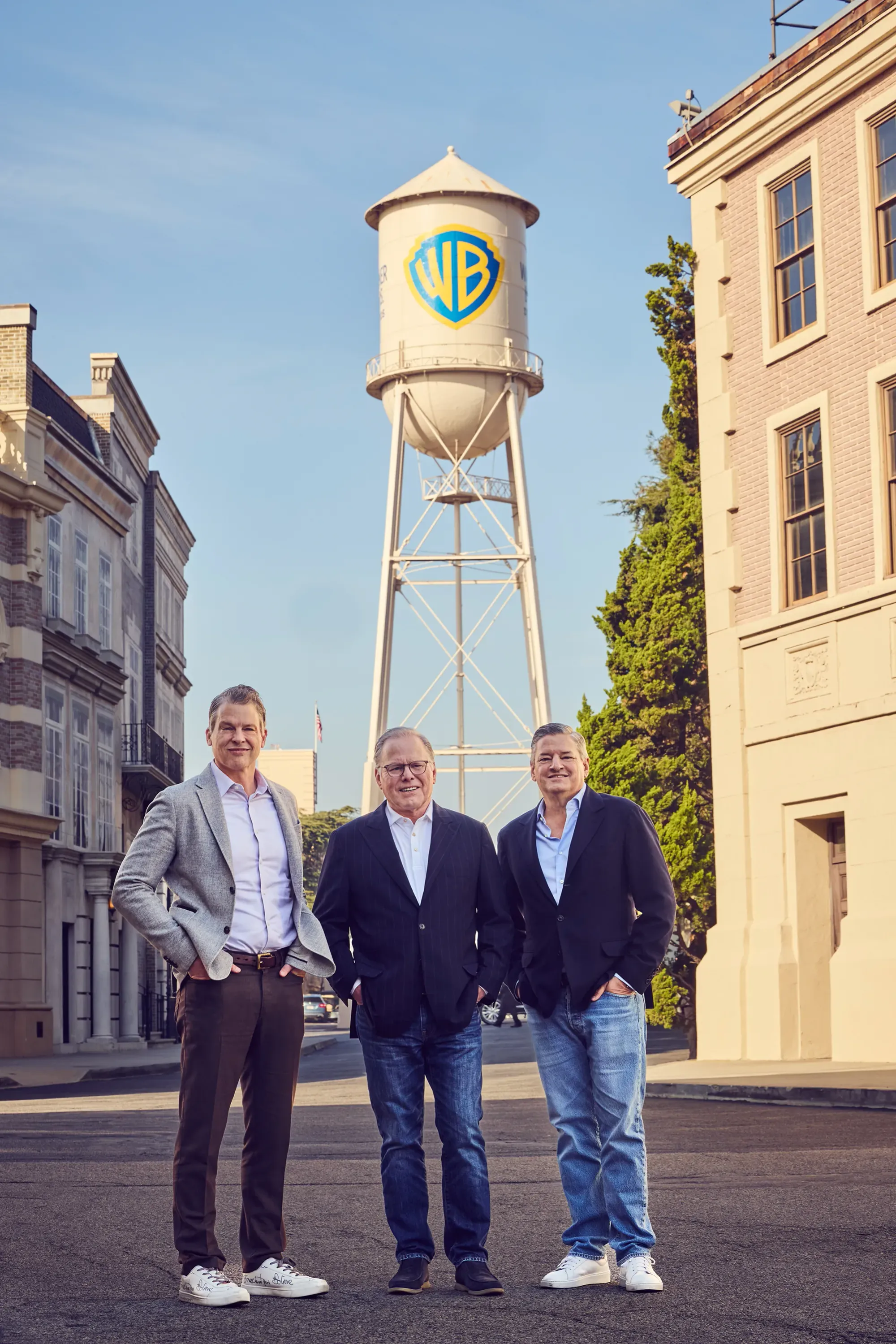
2025-12-19 06:32:26

"Chaos isn't a pit. Chaos is a ladder." For some reason, my mind always drifts to this Petyr Baelish quote when thinking about the current state of AI. And in particular, the constant turmoil inside of the companies making it happen. In building the future, chaos is the only constant, it seems.
And yet it's relative. As we sprint towards the end of 2025, with so much in flux, I thought I'd layout where it seems like the major companies building the AI stand right now – not necessarily in terms of output, but in terms of the situations producing those outputs. At least in terms of outside perception.
Let's count them down from least chaotic to total chaos, shall we?
2025-12-18 05:25:05
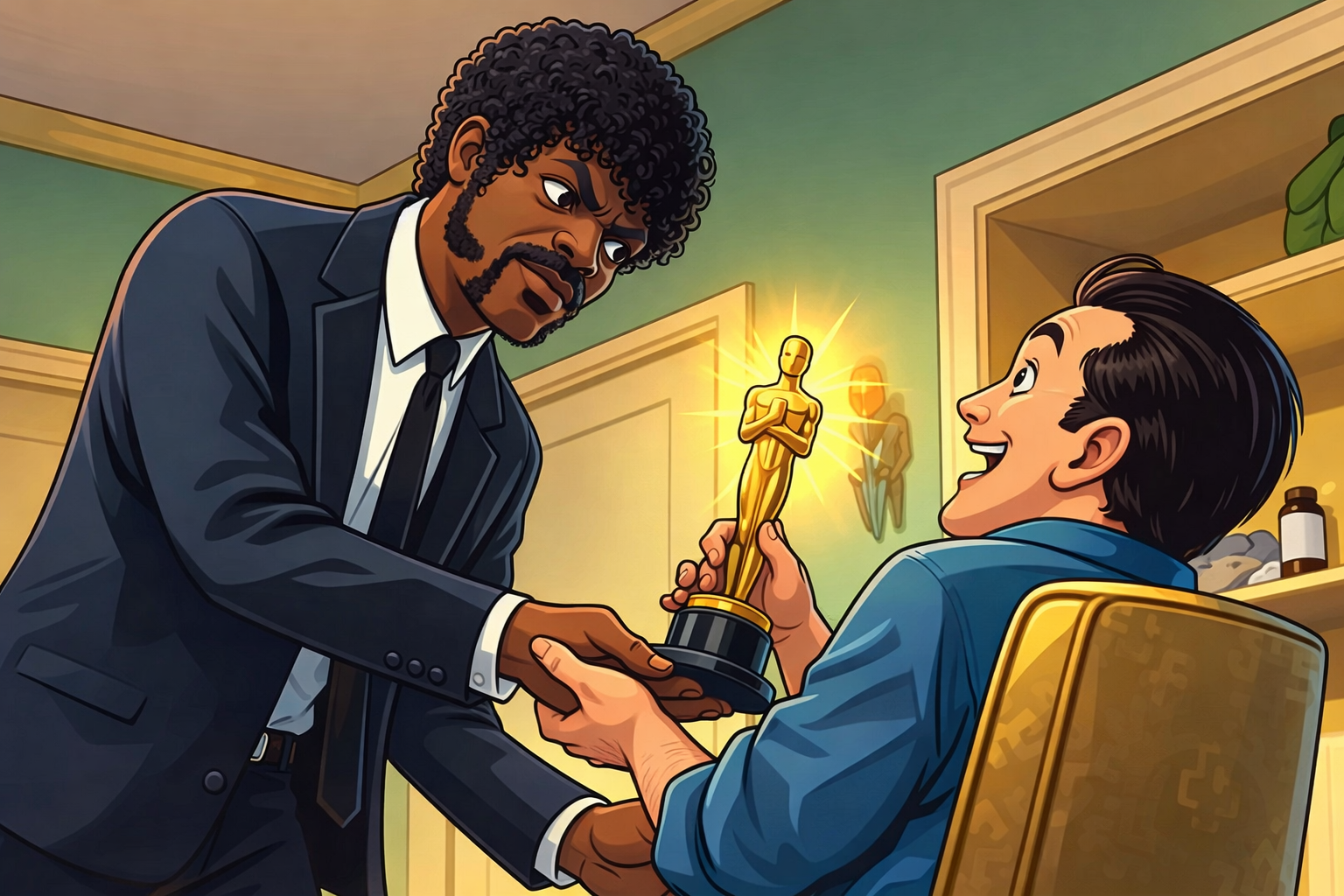
Say 'UGC' again. Say. 'UGC'. Again! I dare you! I double-dare you!
It sure looks like Google may have just handed Warner Bros to Netflix on a silver platter. Yes, Google. Why? Because YouTube just stole The Oscars from ABC.1
On the surface, this may not seem like a big deal. Award shows are silly and famously in decline. That includes the biggest and most famous of them in The Academy Awards. Viewership peaked at 57M in 1998, and while it has bounced back a bit from the pandemic lows, last year saw 20M viewers watch the show. Top creators on YouTube get more viewership than that on a regular basis.
And that's sort of the point. The world has changed. And there's no going back. It's not just that streaming won, it's that the internet won.
And that is especially top of mind at the moment because Netflix has a deal to buy Warner Bros for $83B. But many people, most notably David Ellison, are sure that the deal won't be approved by regulators because Netflix is the top streaming service. And they'd be buying not only the top movie studio (this year), but also the third largest streaming service in HBO Max. It's the stuff antitrust dreams are made of, right?
Well, no. It's far more complicated than that because again, the internet. Yes, Netflix may be the winner in "streaming" but what does that even mean? A service that streams television and movie content I guess. But why exactly aren't we including YouTube – or Instagram, or TikTok, for that matter – in that bucket? Because it's user-generated content? The three scarlet letters of Hollywood. UGC.
Please.
What matters should be the same thing that mattered in the Meta antitrust trial, which saw the "social network" wipe the floor with the FTC's arguments. Why? Because it's 2025 and the legal system isn't stupid. Meta doesn't just compete with MeWe – in fact, I'm not entirely sure they compete with MeWe at all, because I still haven't met anyone who knows what MeWe is (besides clearly the FTC) – they compete with Snap, and TikTok, and yes, YouTube.
It's all about attention. Eyeballs. It's true with Meta, it's true with Netflix. And this YouTube/Oscars deal just drove that home. Just in case the Justice Department needs a data point, The New York Times has a good one in their story on the deal:
YouTube has long been a dominant force on mobile devices and laptops, but it was only in the last few years that it began dominating actual television sets, too. YouTube commands 13 percent of all television viewing time in the United States, the biggest share of any streaming service, according to Nielsen, the ratings firm. (To compare, Netflix stands at 8 percent.)
Wait, YouTube is a streaming service? What?!
There is a war out there. But it's not between the "streamers". Or even the movie studios. Those wars are over. Netflix and Disney won, respectively. The new war is for the next phase of entertainment. Right now, YouTube is winning. And this deal for the Oscars, while small relatively speaking, points to their clear intentions – as does this recent profile of CEO Neal Mohan by The Hollywood Reporter. You know, the one entitled, "YouTube Just Ate TV. It’s Only Getting Started."
That cover story hit a couple months before this deal, quoting YouTube's intent to become "the most powerful platform on earth". So yeah, I think Netflix is going to be allowed to buy Warner Bros. In fact, it feels like they might need to in order to have any shot against YouTube.
As I wrote back in October on the news that Netflix was trying to take video podcasts away from YouTube:
This is a competition for literal eyeballs. And YouTube dominates them in all these verticals. Oddly not in "premium" content where Netflix dominates, but it only feels like a matter of time until they're back competing in that world too, especially as they keep expanding YouTube Premium. Remember when Cobra Kai launched as a YouTube original only to be handed on a silver platter to Netflix? Yeah, they're gonna want another shot at this at some point. It's Google! Initiatives are cancelled only to be rebooted only to be cancelled only to be rebooted...
The fact that as a part of this deal, Netflix is requiring that the videos not be posted to YouTube in full – i.e. only clips for promotional purposes – says all you need to know here. While Spotify can't compete with YouTube in video, Netflix can and will.
UGC, movies, television, it's all going to be thrown into a blender in the next decade. What comes out will terrify Hollywood. But they were terrified when "talkies" came about. Then color. Then television. Then videotape. The plot is always the same, as is the ending. It's not the death of movies, or television, it's the expansion of it. An opening of the aperture to a far larger audience. Hollywood is scared because it's not the same captured audience watching via the same controlled means of distribution. But again, that's not new. The same thing keeps happening over and over and over again.
You're scared of Netflix? Netflix is your guide through this! Just wait until AI really matures as a technology. It has only been three years since OpenAI's DALL-E was released. Look at where we are now with image generation. Look at Sora or Veo. Now close your eyes and think about where we'll be in three years.
Disney gets it – or at least is trying to. Everyone else is dreaming about a return to 1950. Or at the very least, 1998, when Titanic and DVDs ruled supreme. Wake up, Hollywood. And get ready for a five-hour Oscar stream. Because guess what, on the internet, no one can hear you scream about how long a telecast may be. No one cares. The next bit is just a click away. So you better be entertaining. Or else.
Iceberg! Right ahead!
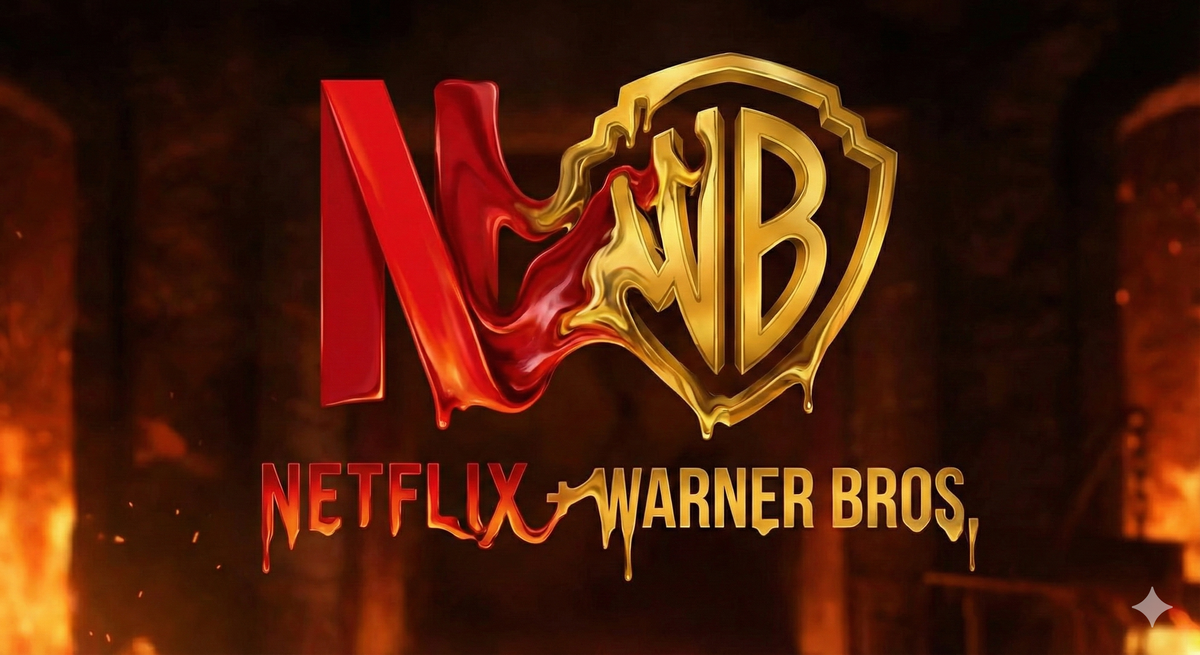
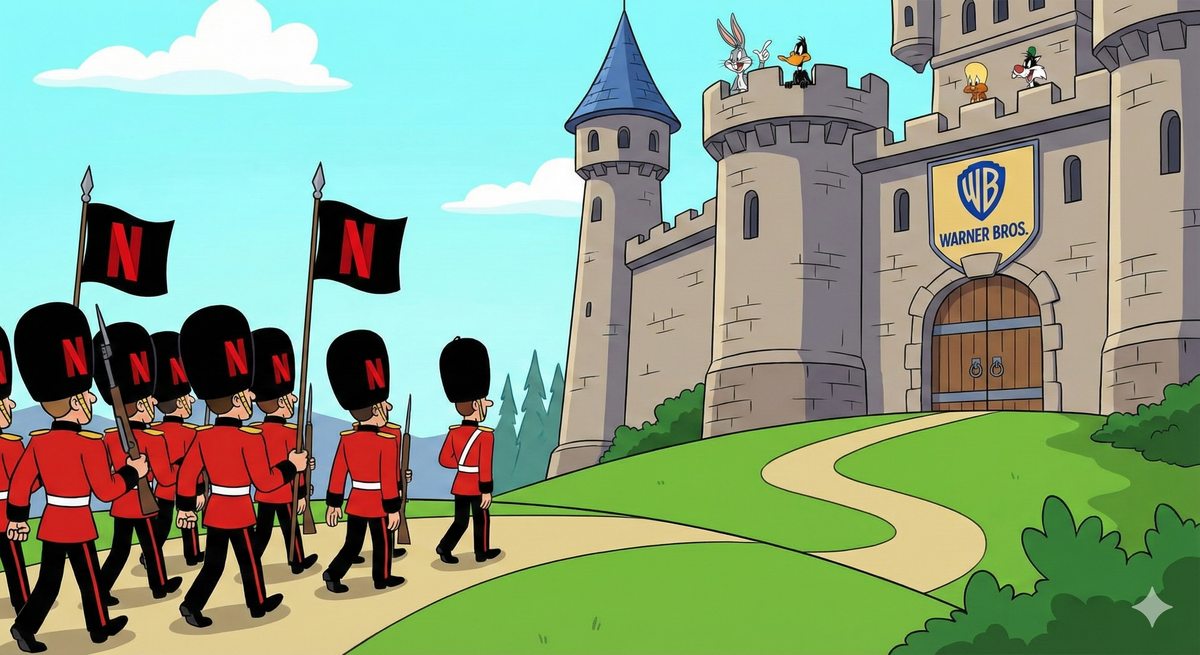


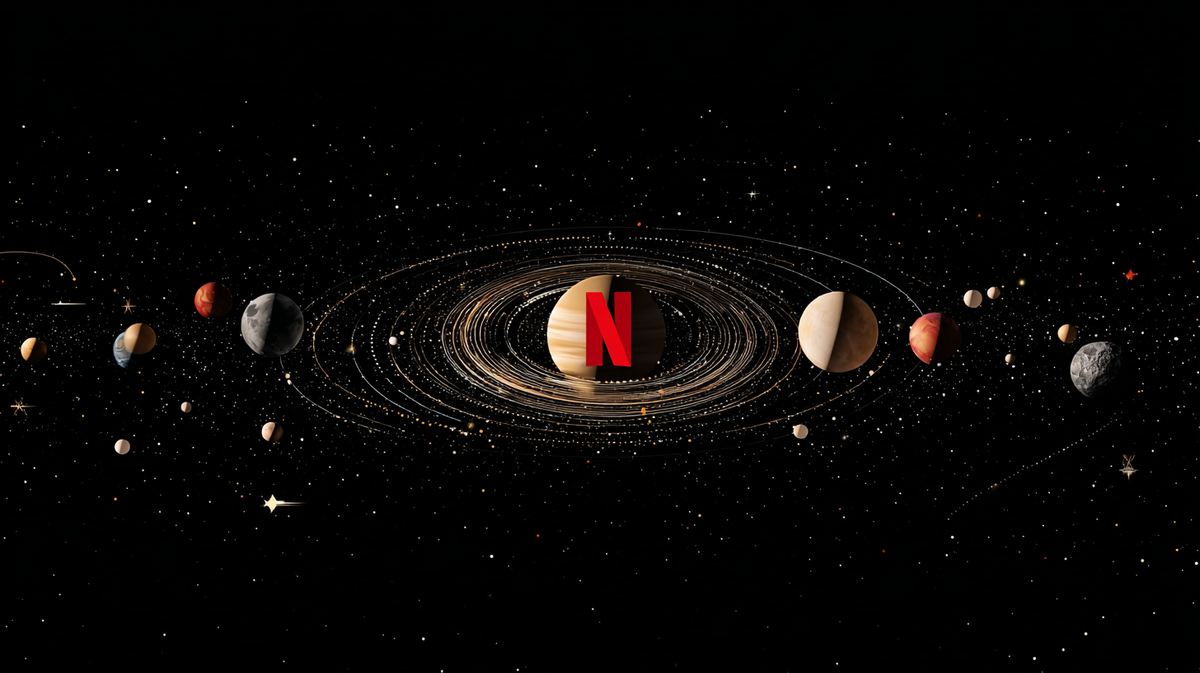
1 A move which wasn't entirely out of the blue, by the way. Lucas Shaw of Bloomberg reported on this possibility back in August. Still, surprising! And who else was in the running for the rights? Netflix, naturally. ↩
2025-12-18 03:16:01
What started as a DALL-E obsession for me way back in the day eventually morphed into a Midjourney addiction. But in recent months, Gemini became my go-to AI image generator. Why? 'Nano Banana' of course. Just exceptional work out of Google – including going with the correct stupid name for maximum virality.1 OpenAI, deep in the throes of a "Code Red", wants their crown back:
OpenAI is rolling out an update to ChatGPT that’s intended to generate images better and faster, the latest move by the artificial intelligence developer to bolster its flagship chatbot amid heated competition from Alphabet Inc.’s Google.
The new version of ChatGPT Images, announced on Thursday, is designed to make and edit images more precisely, as well as to spit out pictures as much as four times faster than its previous AI image-generation model. The company is also creating a new section within ChatGPT’s mobile app and website meant for people to make images, rather than just doing so in an interaction with the chatbot.
I'm happy to report that it's good. Very good, even. I'm only a day or so into using it, but I'm finding myself preferring it over Nano Banana right now in my early side-by-side tests. Most importantly, it's fast. Still not quite as fast as Gemini in my usage, but the biggest issue that ChatGPT had previously with images was just how sloooow it was to generate them. It was tedious. This new version is not.
But the bigger change may actually be the UI tweak to ChatGPT itself alongside this new image model. I always found it a little odd that image creation was a part of the chat interface. On one hand, that's good for simplicity. But we're to the point now where ChatGPT is a pretty robust product, with multiple features and functions. While media you created was sorted into its own area, now image creation has a native home there too. You can still do it all from the main text prompt, but for most users, this area will probably make more sense.
Fidji Simo's post on the matter explains the company's rationale:
Over the past few months, I’ve talked about how ChatGPT is evolving from a reactive, text-based product into something more intuitive and connected to any of the tasks you want to accomplish. The shift from text to multimedia and dynamic UI is an important part of that transformation, and I’m excited about the progress we’re making.
|Many people’s first experience with ChatGPT involves turning a text prompt into a picture. It’s a magical way to see what this technology can do, but the chat interface wasn’t originally designed for this. Creating and editing images is a different kind of task and deserves a space built for visuals. Today we launched a new image gen model and a dedicated entrypoint in ChatGPT for images that works more like a creative studio. The new image viewing and editing screens make it easier to create images that match your vision or get inspiration from trending prompts and preset filters.
And yes, this does seem to be just the start of reworking the ChatGPT UI to better accommodate the job being done, rather than just, you know, chat.
Again, there are risks to that move away from simplicity, but it also feels like the right time to evolve. Especially when Gemini's own product has evolved to look... a lot like ChatGPT. One of OpenAI's key strength has been their ability to productize AI, and Google, it seems to me, is starting to catch up. So you gotta keep moving.2
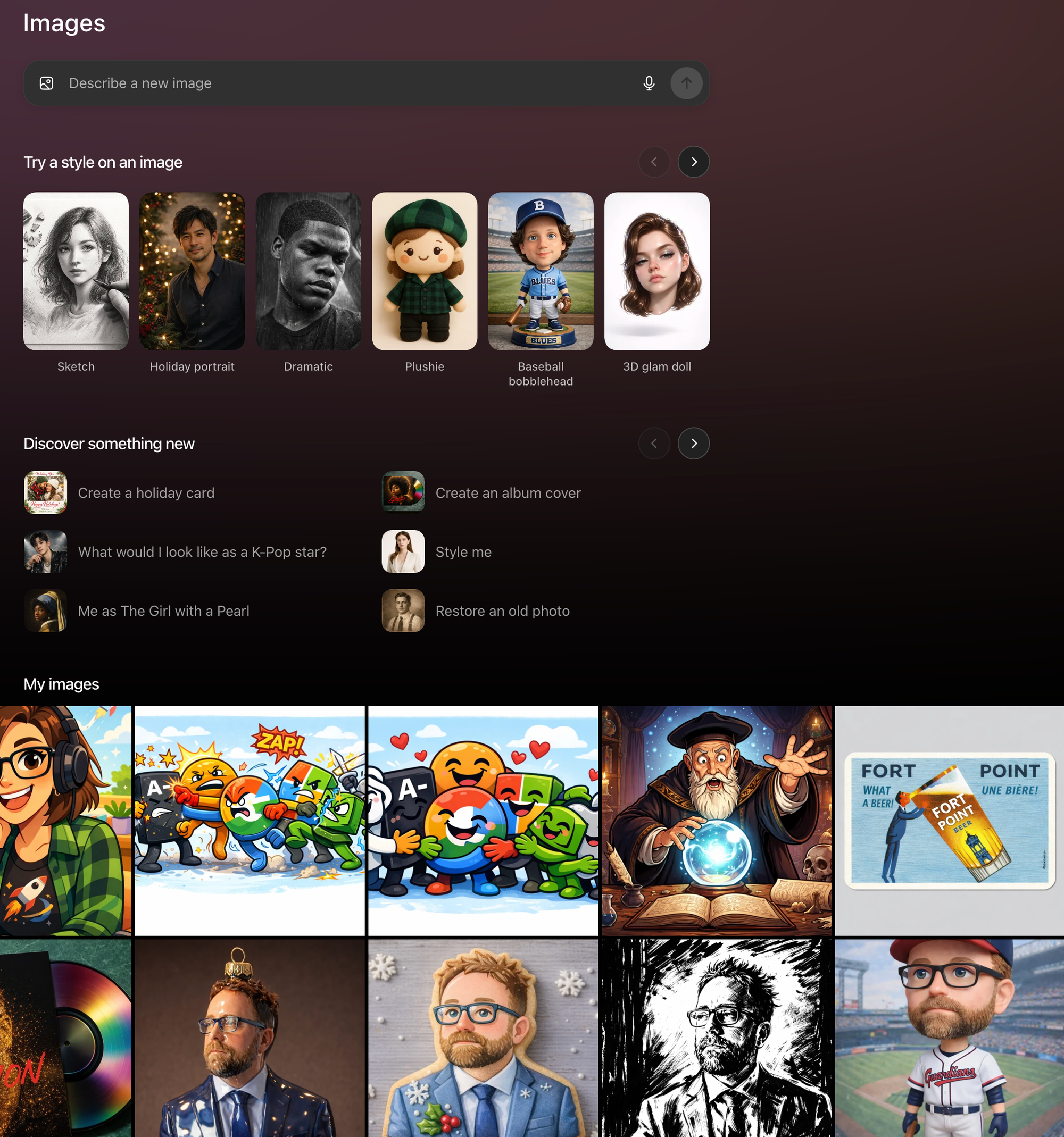
1 Sort of ironic given OpenAI's use of fruit nicknames-that-should-have-been-product-names as well... ↩
2 Especially if one end-goal is to create new kinds of devices that lives far beyond a text prompt... ↩
2025-12-17 20:51:01
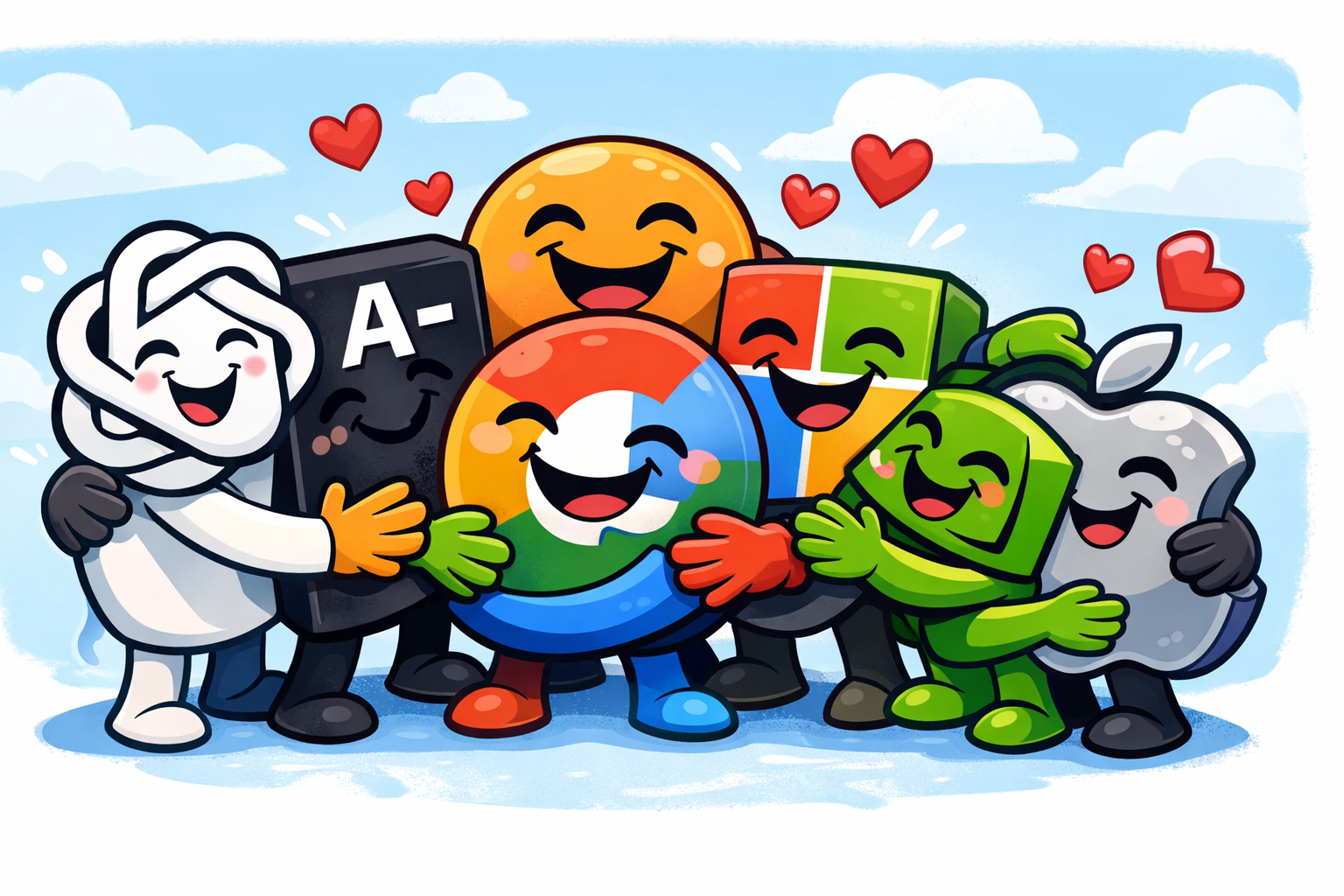
Wikipedia defines the concept of "conflict of interest" thusly: "A situation in which a person or organization is involved in multiple interests, financial or otherwise, and serving one interest could involve working against another."
It has always been a bit of a gray area with investors. In fact, one of the most famous VC quotes of all time turns the notion on its head: "No conflict, no interest," is often attributed to Kleiner Perkins' John Doerr back in the day – it may be apocryphal, it doesn't matter, because it's accurate. Increasingly so.
Whereas investors used to still at least try to adhere, or appear to adhere, to avoiding conflicts in their investments, in walked AI and turn the gray area clear. As in invisible. As in, it no longer matters. I mean, it still does because people and egos are involved. But the reality of our current situation is that all of these AI companies need to raise the maximum amount of money possible, because they're burning the maximum amount of money possible.
Today brings the latest in a long line of recent examples. As Anissa Gardizy, Sri Muppidi, Cory Weinberg, and Amir Efrati report for The Information:
Amazon is in talks to invest $10 billion or more in OpenAI, according to three people familiar with the discussions. The valuation would be higher than $500 billion, one of the people said.
This is big news and yet entirely predictable. Because, well, I predicted it:
It also sure feels like with this latest news we're mere weeks away from Google and/or Amazon investing in OpenAI, completing the ouroboros. Apple? All totally cool, right? Since this isn't "zero sum" per Nadella...
Honestly, I'm mainly impressed by my timing prediction here – that was, in fact, just a few weeks ago – because the investment itself was inevitable. And that's because it follows the news that Microsoft and NVIDIA were investing in Anthropic.
2025-12-17 00:12:51

In August of 2022, Amazon announced the acquisition of iRobot, the makers of the popular Roomba robotic vacuum, for $61/share, roughly $1.7B – all cash. On paper, it looked like Amazon was potentially getting a good deal,1 as that price was a bit under half of the peak stock price the company achieved in early 2021. Of course, that was also the peak of the pandemic and with everyone stuck at home, iRobot was a clear and obvious beneficiary.2 By 2022, with lockdown restrictions lifting, iRobot was stuck in the corner when it came to earnings. Amazon, as it turns out, wasn't getting a deal, they were catching a falling knife.
Not so fast, said regulators. A few weeks after the announcement, the FTC, led by Lina Khan, announced they were looking into the deal. The following summer with the FTC investigation still ongoing, the UK's Competition and Markets Authority cleared the acquisition. But almost immediately after, the European Commission launched their own investigation into the deal.
Miraculously, the EC moved far faster than the FTC, and by November of 2023, they issued a formal "Statement of Objections" to Amazon, indicating they believed the deal violated antitrust rules. By January 2024, they were moving to block the deal. As a result, 16 months after the agreement, Amazon dropped the bid.
The FTC never formally weighed in – again, after nearly 16 months of looking into it – but all indications were that they were moving to sue as well, which is undoubtedly what was the actual final straw for Amazon. Well, that and the fact that the iRobot business knife kept falling the entire time. In a way, regulators may have saved Amazon future headaches here – certainly they saved them some money. But they also killed iRobot.
Here's Peter Hoskins reporting for the BBC:
The US firm behind the Roomba smart vacuum cleaner, iRobot, has filed for bankruptcy protection after facing competition from Chinese rivals and being hit by tariffs.
Under the so-called pre-packaged Chapter 11 process, external, the main manufacturer of its devices, Shenzhen-based Picea Robotics, will take ownership of the firm.
Yes, you're reading that correctly, thanks to the EC and with that huge assist from the FTC, an American company was stopped from buying another American company, and as a result, that American company went bankrupt and their assets are now being taken over by a Chinese company.
Great job everyone.
After Amazon dropped their bid, iRobot immediately announced the departure of their CEO and the elimination of over 30% of their workforce in an attempt to stay afloat. The company's stock went from trading in the high-$30/share range (showcasing investor skepticism that the deal, which also had to be renegotiated a bit in those 16 months, was going to get done) to plummeting by more than half overnight. By the time of this bankruptcy, the company had undergone more rounds of layoffs and the stock started trading under $1 a share – giving iRobot a market cap of under $40M – less than half the puny $94M break-up fee Amazon paid when the deal was killed.
So here I am today left wondering why we're not seeing a Lina Khan victory lap, like the one she took when Figma went public after she successfully torpedoed their sale to Adobe. Also, I'm not seeing a Tim Wu op-ed as we often do around these matters. Others who were quick to rage against the living room machines being owned by Amazon were bathing in hypocrisy today. One wonders how Elizabeth Warren is going to vacuum her home now. Probably some cheap Chinese robot vacuum.
There are not a lot of other options...3
My point, as always, is just how badly broken the antitrust review system is, both in the US and in Europe. It's completely ill-equipped to operate in the 21st century, propelled by thinking that not only is overly focused on hindsight, but is often just backwards. And everything coming down the pike with AI is only going to exacerbate the issues further. Regulators have been busy worrying about VR fitness apps and focused on going after Big Vacuum, which has created a big vacuum when it comes to leadership and guidance that actually protects anyone.
Mostly the markets do their thing and remedy such situations without the need for intervention that at best is a distraction, but at worst is, well, this iRobot situation. But the fear would be that they won't in every situation and some sort of regulation will actually be needed. But we now have a very real "boy who cried wolf" situation, where because these government bodies keep going after anything and everything that acquires, looking for the spotlight to further political careers rather than any actual consumer harm, no one believes they'll actually get this right when they need to.
What they do with this Netflix/Warner Bros deal will be fascinating. Certainly, they're going to look at it – again, if nothing else, there's a huge spotlight to be stepped into here – but it's not clear that blocking such a deal wouldn't actually leave everyone – Hollywood included, though they're rage-blinded to it right now – in a worse spot. Maybe not iRobot bad, but leaving Warner Bros not really in any sort of shape to truly compete in the market. I do wonder if Netflix, much like Amazon with iRobot, isn't the would-be savior here. Not a thief in the night.
One more thing: while Khan was quick with that Figma victory lap, with the stock popping (completely unnaturally) out of the gate, yesterday the company's market cap fell to $17B – that's $3B less than Adobe's $20B offer. As Ben Ling notes, the broader markets are up about 50% since that deal collapsed. At the time the deal collapsed, Adobe's stock price – it was a 50/50 cash/stock deal – had doubled from when the offer came in. Great job everyone.
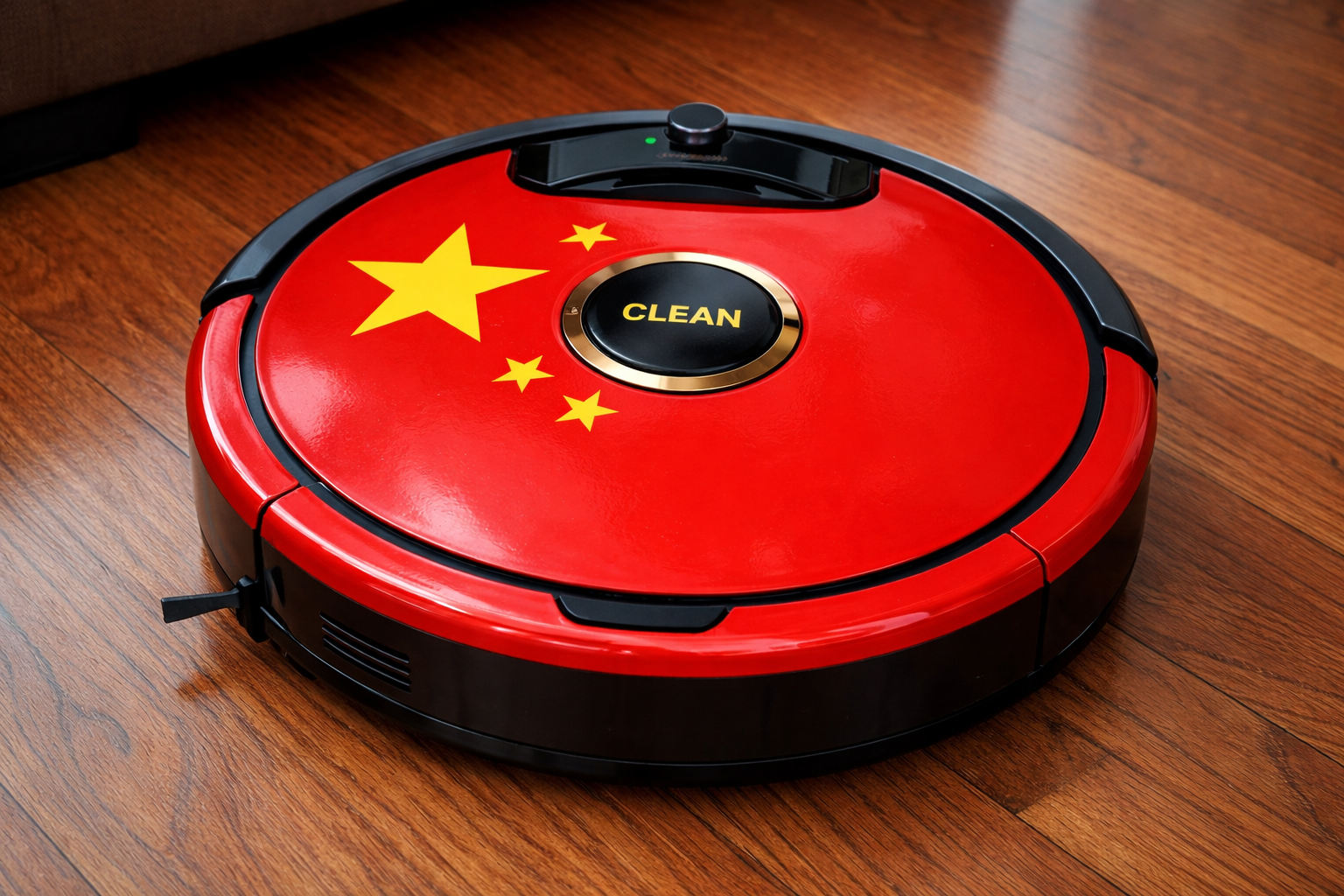
1 There was some initial thought that this deal would bolster Amazon's fledgling robotics division. But in hindsight, that too looks a bit silly compared to the robotics being worked on now in our Age of AI. Maybe Amazon would have gotten some interesting indoor mapping data to help future robotic endeavors – maybe. More likely, Roomba just would have been another Alexa-enabled device to sell. ↩
2 Easy to forget now that the company, started in 1990 by three MIT researchers, at earlier points had built robots that were "deployed with U.S. ground troops, searched the World Trade Center after the Sept. 11 attacks in 2001 and monitored an oil spill in the Gulf of Mexico." ↩
3 There is some hope... ↩